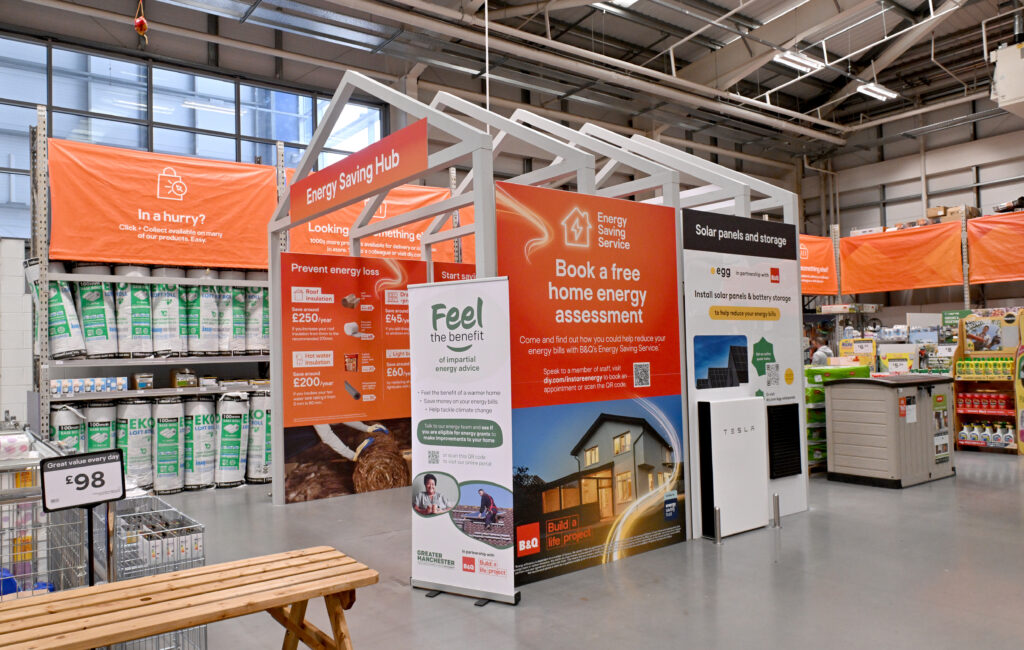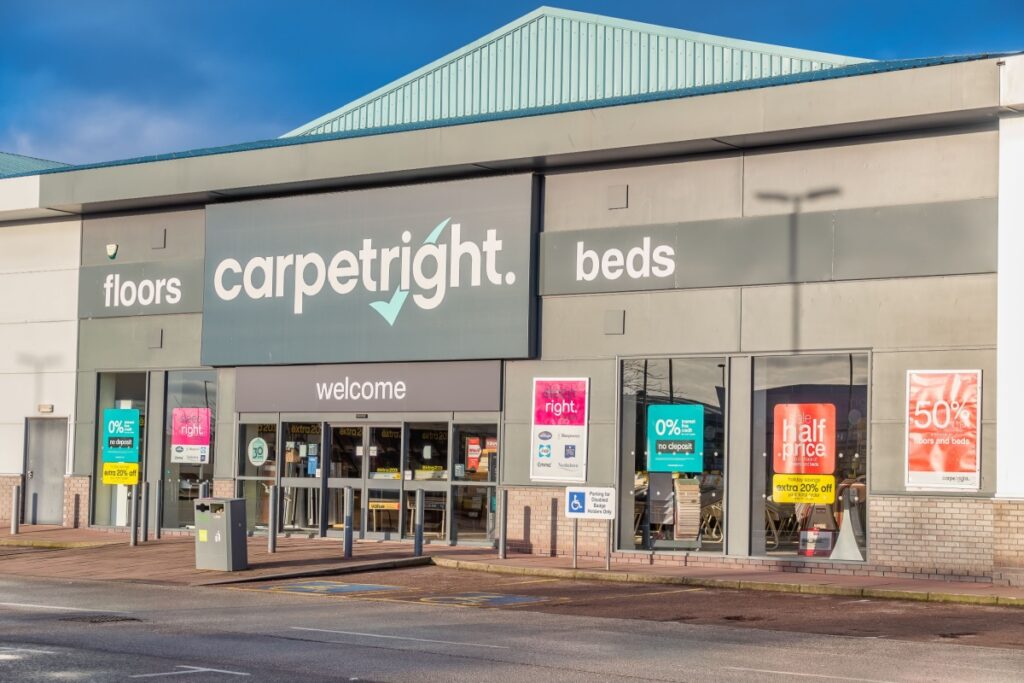While the retail industry continues to take a hit amid the Covid-19 pandemic, homeware and furniture retailers have seen a surge in demand as Brits stay home.
A recent survey from Made.com revealed that last year during lockdown, 40 per cent of consumers decided to invest in their homes with new homeware. And as more retailers look beyond their traditional core offering, usually fashion, and launch homeware and loungewear ranges – could this have been a predictable trend?
“While it might not be easy to predict a lot of things during an unforeseen pandemic, retailers should have been able to identify common buying patterns of their customers which are directly linked to spending time at home and been able to capitalize on that,” said Lisa Perrone-Cirelli, co-founder of online solutions firm Stylyze.
“We know that when people are focused on their home, for example when they first move into a property, they will spend money on remodelling and furniture.
“We also know that many homeowners use their free time to work on DIY projects related to their home improvement or interior design.
“These buying patterns in conjunction with the stay at home orders should have given any astute retailer the insight that homeware sales were something that would be on a rigorous upward trend.”
Fashion retailer Mango is set to launch its first ever homeware collection this month, while online retailer PrettyLittleThing launched its own range late last year. Yet despite this obvious demand, high street stalwart Marks & Spencer has continued to see sales slump in its home division – although it’s important to highlight that sales in that division are combined with fashion.
Harry Cole, founder of linen and curtain retailer Loom & Last, said the reason some retailers might be having more success than others was down to consumer relationships.
“The brands succeeding are focussing on building genuine relationships among their consumers, moving away from an emphasis on selling and further differentiating themselves from the competition,” he explained.
“Brand identity also plays a role in how customers connect and engage, having a longstanding and familiar brand simply is not enough to survive in a saturated and competitive market.
“Retailers are having to adapt to the current climate, listen to their customers and meet their need.
“Attitudes towards our homes have changed”
“Consumers buy into a brand for its lifestyle appeal and the way it makes them feel, so strong communication, branding that speaks to the target audience and high-quality products all play a role in a satisfied and returning customer.”
Heritage retailers, like M&S, can tap into these consumers through their online channels, according to Studio marketing and digital director Chris Chalmers.
“For heritage brands that have had to work quickly to adapt to an online-only service, a solid online marketing strategy is fundamental for the consumer education journey,” he said.
According to Ofcom, during the first lockdown, the amount of time people spent looking at screens increased by 40 per cent.
“This gives retailers the perfect platform to attract new customers, whilst re-engaging existing shoppers through digital marketing channels,” Chalmers added.

According to Cole, retailers need to rethink their pre-Covid trading strategies.
“The pandemic has left behind a trail of closed bricks-and-mortar stores,” he told Retail Gazette.
“Some have disappeared altogether, while others have had to downsize, but essentially, the world has moved online, forcing the nation’s favourite retailers to rethink the way they speak to their customers.
“It is no secret that everyone has become more connected to technology as it plays a role in almost everything we do.”
“Social selling has also been on the rise, so having a multi-platform strategy to include presence across online, social media and media coverage is essential for retailers.
“Customer experience should remain at the top of every retailer’s list.”
As well as adapting with consumer interests, the way retailers trade has never been more different from pre-Covid years. As a result, marketing efforts have also had to adapt.
During this time, Wayfair has been tailoring its marketing strategy to answer customer’s changing needs while navigating lockdown life and to sensitively recognise the challenges everyone has been facing.
“The high-street struggles to keep up”
“We have run a number of Covid-19 response campaigns across our channels, including our ‘Happy at Home’ campaign, which aimed to offer support, guiding customers on the best ways to reconfigure and organise their spaces for productivity, comfort and wellbeing,” Wayfair head of Europe Martin Reiter said.
“From practical guidance on how to set up a quick and easy home office to inspiration on how to integrate mood-boosting colour.”
Paul McGuinness, owner of the home furnishings retailer Terrys, said that people are now looking to online stores not only for the products themselves but for inspiration.
“It’s important that a retailer can give more to the customer than just the final product,” he explained.
“Digital imaging, AI and virtual styling has played a huge part in marketing homewares throughout lockdown as it allows customers to visualise the products in their own homes whilst they aren’t able to travel to stores.”
Terrys launched the ViSULiZR app during lockdown, allowing customers to virtually see their blinds in the home before purchase.
As more retailers jump onto the trend of homeware, standing out from competitors will be achieved through unique offerings and positive customer experiences.
Reiter said Wayfair’s “unmatched selection of more than one million products across every style and price point” was a key factor in its success.
“We have found our broad selection to be a big differentiator during this unique period as customers can answer all of their homeware needs in one place,” he said.
“At a time like this, a fast and frictionless shopping experience and excellent customer service are also absolutely key, to not just stand out but drive repeat business.”
McGuniness agreed. He said that in order to stand out within the home and interiors retail sector, one needs offer more than just a product.
“Going above and beyond for your customers with a personal customer journey, a strong variety of products to choose from and real-home inspiration means the customer can see their design choices come to life,” he said.
He also pinpointed social media and the large role it played driving a surge in demand or homeware.
“Instagram and Pinterest are acting as sources of inspiration for everyone from the everyday DIYer to an avid designer,” he added.
As lockdown restrictions begin to ease and Brits are no longer stuck at home, there could be a drop in demand for homeware. Chalmers said that even though he expects consumers to be out of the house more, it won’t be to the same extent as before the pandemic.
“It is only natural for the demand to decline when lives resume to a state of normality, however the new normal will differ from what life was like pre-pandemic,” he said.
“The return to office life will be gradual and even then, it’s likely that the working week will be split between office space and home working.
“People have found a new love for their home, so we expect there to be a continuation in demand for high quality, value homeware.”
McGuniness added that there was always an element of seasonality and therefore expected peaks and troughs throughout the year.
“That being said, when restrictions last eased demand remained high,” he said.
“Consumers are now used to the new way of shopping and it’s anticipated that this will continue for the foreseeable future.”
Click here to sign up to Retail Gazette‘s free daily email newsletter


















